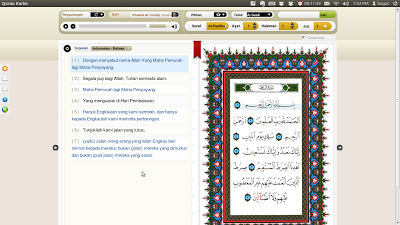 |
| Kuon dan Ibu Yamada (image credit: NHK) |
Naskah Percakapan
| クオン | 山田さん、一緒に帰りませんか? | Yamada, bagaimana kalau kita pulang sama-sama? |
|---|---|---|
| KUON | YAMADA-SAN, ISSHO NI KAERIMASEN KA? | |
| 山田 | ごめんなさい。 まだ仕事が終わりません。 クオンさんも手伝ってください。 | Maaf, tapi pekerjaan saya belum selesai. Kuon, bisa tolong bantu saya? |
| YAMADA | GOMENNASAI. MADA SHIGOTO GA OWARIMASEN. KUON-SAN MO TETSUDATTE KUDASAI. | |
| クオン | えーと、今日は残業できません。 | Mm... saya tidak bisa kerja lembur hari ini. |
| KUON | ÊTO, KYÔ WA ZANGYÔ DEKIMASEN. | |
| 山田 | えっ…。 | Heh? |
| YAMADA | E'...? |
File suara percakapan di atas dapat diunduh di sini.





